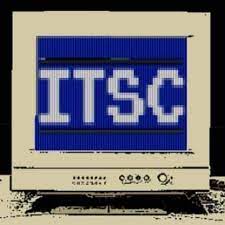I visited Medtronic’s ACM2U (Acute Care and Monitoring) Truck at the second stop of the UK leg of its tour to get up close with groundbreaking patient monitoring technology.
Medtronic is currently in the midst of what is essentially a world tour. The MedTech giant kicked off the ACM2U Roadshow in Iberia in May 2025, touring across Spain and Portugal, before taking a summer break and returning in September to visit more European sites, starting off in Aberdeen at the Association of Anaesthetists Congress, before travelling down to Liverpool Heart and Chest Hospital.
I visited the truck on the first day of its Liverpool leg of the tour, and was able to speak to the team, see the technology up close, and learn about the groundbreaking patient monitoring technology.
The ACM2U (Acute Care and Monitoring) Truck was designed to bring Medtronic’s patient monitoring solutions directly to those involved in the day-to-day care of patients, who wouldn’t otherwise have the opportunity to learn more about the tech that they are using, and speak to the experts who provide it to them right on their doorstep. Medtronic says it aims to help build clinician’s confidence in using the latest tools and innovations to improve patient outcomes.
Janne Hartwig of Medtronic, the Project Lead for the ACM2U Truck told Med-Tech Insights: “We’ll drive through basically the whole of the UK until the end of October, drive to hospitals and showcase our newest innovations to healthcare providers, educate them, help them to understand our solutions, to try and get the best outcome for their patients.
“The idea behind the truck is that we have a lot of people that are coming to congresses, to medical training, but there are still more than 80% of people in the hospital, that are within the process of using our innovations that don’t have the chance to visit those meetings. So we thought about an idea of bringing a solution to the people, to the daily businesses, to ensure that even a nurse or doctor who doesn’t have the resources or the time to go away to congresses or training for a few days, can still see our innovations, understand what our thinking and our vision about our products is, and get the chance to gain some insights about Medtronic.”
It is no secret that the NHS is overstretched. As of August 2025, the NHS waiting list stood at 7.4 million patients, as well as 24.1% of patients waiting more than four hours to be treated in A&E, with above 35,000 more waiting over 12 hours, according to the latest NHS figures.
Medtronic says that with the growing strain on hospitals caused by staff shortage, there is an ‘urgent need’ for innovation, and new solutions that protect patient safety while streamlining the delivery of care. The company says Liverpool Heart and Chest Hospital is one of the sites that is ‘embracing new medical technology solutions’ to better meet the needs of patients and support NHS priorities around digital adoption and care closer to home.
Innovation Station
Inside the ACM2U truck, when I visited on September 29th, was the Corsano multi-parameter wearable. A ‘breakthrough’ device that continuously monitors a patient’s key vital signs. The device allows doctors and nurses to monitor patients recovering both at the hospital, and in the comfort of their own home, reducing strain on NHS facilities.
The multi-parameter wearable, designed by Corsano Health monitors vitals such as heart rate, breathing rate, SpO2, cuffless non-invasive blood pressure monitoring, and ECG.

“The Corsano is the first medical grade wearable of its kind that can have increased parameters, including blood pressure, SpO2, it also monitors AF, heart rate variability, all of those things directly from the wrist, without additional attachments like others currently on the market. It’s CE-marked, FDA approved, its got MHRA Grade 2 rating, and can be used in so many instances within the hospital,” Rachel Jarvis, Business Development Manager – Patient Monitoring at Medtronic told Med-Tech Insights.
One of the issues faced by hospitals in the UK is bed shortages, which when coupled with high occupancy rates, often sees patients treated in unsuitable areas such as corridors or bathrooms. How Medtronic says the Corsano wearable would help in this scenario is the time it would save per patient, as hospital staff wouldn’t be occupied with time consuming tasks such as manually collecting vital signs and filling out paperwork, as it is all done automatically and stored digitally.
According to the company, the device will save 9.9 minutes per patient daily and reduce a patient’s length of stay in a hospital by a mean of 3.32 days. In a study referenced by Medtronic, 29.4% of postoperative deaths occur after patients leave the hospital, during a time when monitoring often stops but risks remain. The Corsano wearable allows clinicians to stay connected to their patient’s status after they have been discharged.

Personalised Anaesthesia & Safe Sedation
Another station inside the ACM2U truck featured three different devices used for patient monitoring in a clinical setting, the BIS (Bispectral Index) Brain Monitoring System, a depth of anaesthesia device which gives a direct measure of anaesthesia’s effects on the brain; the NOL Pain Technology System, a nociception monitor which allows doctors and nurses to assess and personalise a patient’s pain response during surgery and in critical care settings; and the INVOS System, a cerebral oxygenation device which provides a continuous, non-invasive measurement of the oxygen in a patient’s brain.

Speaking to Med-Tech Insights about the BIS Brain Monitoring System, Phil Earnshaw, Perioperative Specialist at Medtronic said: “It examines the brainwaves and splits them up into frequencies that are associated with being asleep, and how much power is being associated with being asleep allows us to assess how deep of an anaesthetic the patient is getting, and that mean we can deliver less drugs for a maximum effect, without the patient suffering any negative effects of the drugs, such as sickness or confusion, delirium etc.”
Earnshaw mentioned how the depth of anaesthesia monitoring device can be paired with the NOL Pain Technology System: “Utilising these devices allow us to tailor anaesthetics on a personal level, not just a statistical level. A personal level allows us to be safer for the patient, as it allows us to deliver less drugs for optimal effect, with less side effects post-operative as well. In an ideal world, all our devices would be used at once, but there are some instances when one of the devices may not be needed, but certainly the depth of anaesthetic device and the nociception monitor paired together give a personalised, precise anaesthetic.”
Earnshaw also told Med-Tech Insights about the cerebral oxygenation device: “This is mainly used in cardiac surgery, or in places where the patient is positioned with a head up or head down in a steep position, to tailor the amount of oxygenation the patient is receiving whilst they’re asleep.”

Difficult Airways

The next station I visited inside the truck featured the McGRATH MAC Video Laryngoscope, a device which Medtronic says is designed to help clinicians be ‘better prepared for the unexpected’ when it comes to airway complications with a patient.
On the station there was a dummy set up, and I was able to have a go of the device and experienced how it worked first-hand. It took a couple of attempts for me to position the device correctly in the throat of the “patient”, but for someone with absolutely zero clinical experience, I think it went pretty well. The device had to be positioned correctly so that it opened up the airway, allowing a tube to be fed down into the larynx past the vocal chords, and the screen displaying a clear image of the inside of the throat made this incredibly intuitive.
I spoke to Matthew Ryder of Healthcare21, a partner of Medtronic that distributes the McGRATH device in the UK and Ireland. Ryder spoke about the success of the device in clinical settings: “The first-time success rate, first time pass is superb. You’ve got the patient in full view when you are intubating, so you’re not having to look out to a separate screen, and other people in the operating theatre can see what’s going on now as well.
“Most places now that have adopted the McGRATH use it routinely, so not just for the difficult airways, they’re using it as their go to laryngoscope. If you can use a standard mackintosh, you can use a McGRATH.”

Pulse Oximetry
The final station I visited featured Medtronic’s Nellcor Pulse Oximetry technology. The company says the Nellcor system with OxiMax technology establishes a ‘new milestone’ in patient safety monitoring. The technology is able to more effectively monitor patients, including those who there may have been struggles to monitor in the past, for reasons such as the pigmentation of their skin.

The system was set up with a simulator, which had a wide variety of settings that could be adjusted to show the capabilities of the Nellcor, alongside a similar system from a competitor to show the difference.
Basri İçmeli, Conversion Specialist at Medtronic told Med-Tech Insights: “We want to demonstrate with our simulators, because in the normal hospital conditions, if someone gives you a sensor for testing, generally it’s testing with healthy volunteers, so with normal saturation level, normal pulse rate level, with normal perfusion level, they aren’t challenging conditions. But when we go for example to the operating room, we will witness the severe conditions, such as poor perfusion. That is why Nellcor is making us superior to the other competitors.”
The success of the ACM2U Roadshow
I spent over two hours on the ACM2U truck, talking to the experts from Medtronic and their partners, seeing the technology up close and hearing about how their innovations are changing the future of patient monitoring. I arrived at the very beginning of the first day when only the Medtronic staff was there, and by the time I left, the truck was filled with hospital staff learning about the technology.
I spoke to Hartwig about what the response had been like from the visitors to the truck across the previous stops, the ACM2U project lead said: “When people see the truck, they are very excited because obviously something like this is not common in the daily business. With the size of it and the opportunities you have inside the truck, they’re really interested in seeing our solutions and being part of the training because it’s free education for them.
“People are very interested to explore new topics, evolve themselves and their skills. In Spain we had politicians coming in, we had the C-Suite from hospitals coming in, we’ve had probably over 1000 healthcare providers visit in the last four months, and probably around 250 people trained in the truck already. These are great numbers and with the perspective of being on the road for the next eight months still, as we end in April, I think we will have a good result of bringing the education to the people and having a good impact on patient safety.”
The next stop for the truck following Liverpool is the University Hospital Llandough in Wales, managed by the Cardiff and Vale University Health Board on October 6 to 8. More information about the roadshow and the rest of the dates can be found here.





Related
The post Inside Medtronic’s ACM2U Roadshow – Med-Tech Insights first appeared on TechToday.
This post originally appeared on TechToday.

